A Personalized Beauty Product Organizer + Skin Regimen Manager (WIP)
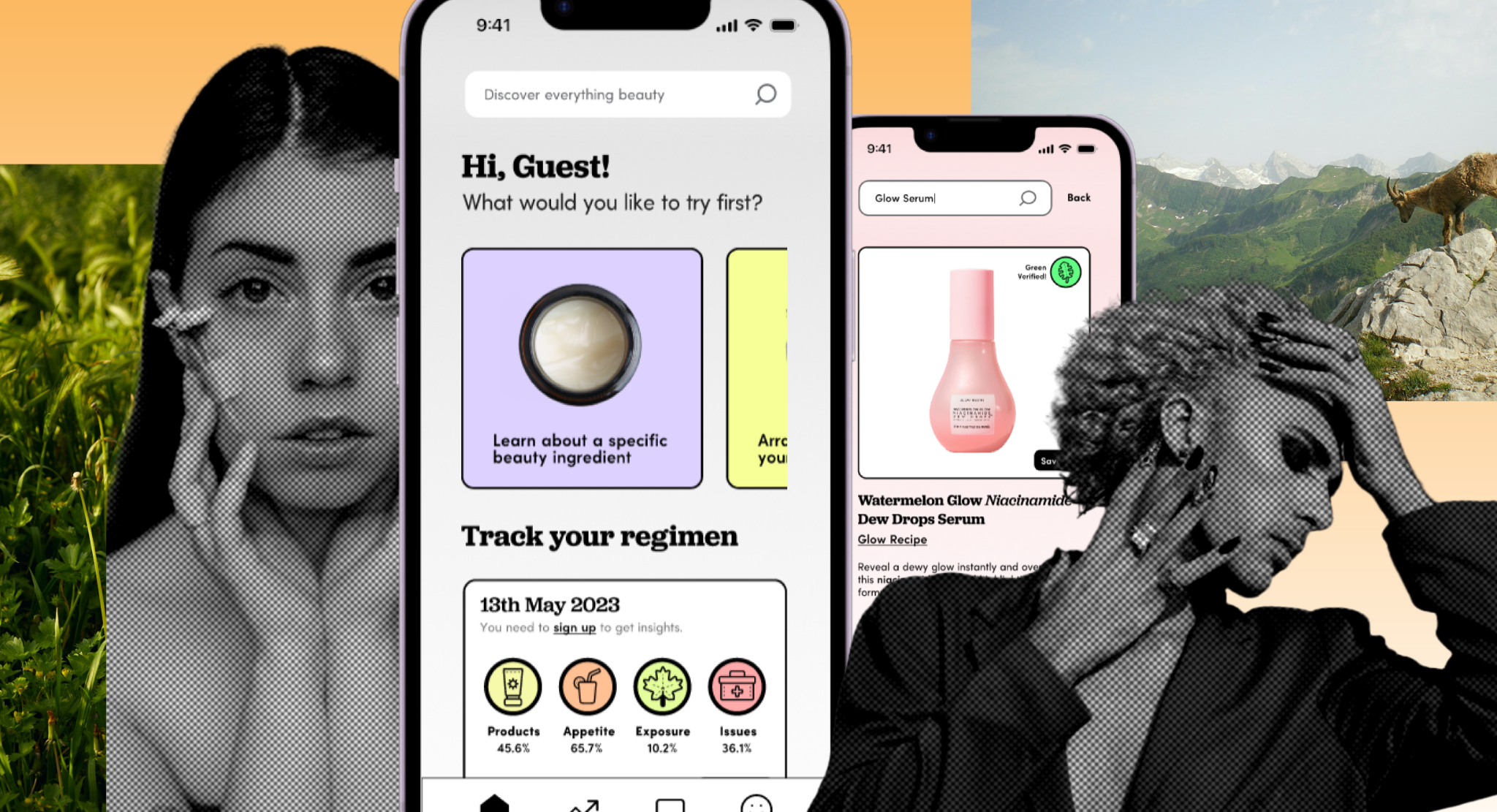
Status: In Progress | Team Members: Ishmita (Me), Hamsika
Introduction
Your skin (or hair) has been giving you a hard time lately. Where do you go for information first?
The first thing you might do is hop online and search for some beauty tips to follow. And if you are new to beauty, that could actually become a big issue. Unfortunately, clickbait and misinformation online about health-related subjects are steadily increasing, according to a NBCNews article.
It is easy for anyone to fall for new beauty techniques and products that claim to be "toxin-free", "organic" and "revolutionary" when they actually aren't.
Tools + Software Used

Design Methodology
Empathize → Define → Ideate → Prototype → Test
User-Centered Design (UCD) Process
Problem Statement
This helped us define the overall scope of the project so we can stay on a linear path with our research.
- User: Daily user of beauty products
- Need: Make conscious beauty purchases
- Goal: Start or maintain beauty routines for better skin and hair health
“How can we help users to make conscious cosmetic purchases for starting or maintaining existing beauty routines?
Pitch Deck
This deck explains the project overview and the features that we intend to be developed along the way.
The Iceberg Canvas
We used the canvas to explore the hidden ramifications to the solutions that were hypothesized. This means looking beyond the simple structure of the problem and identifying core ideas that might arise later.
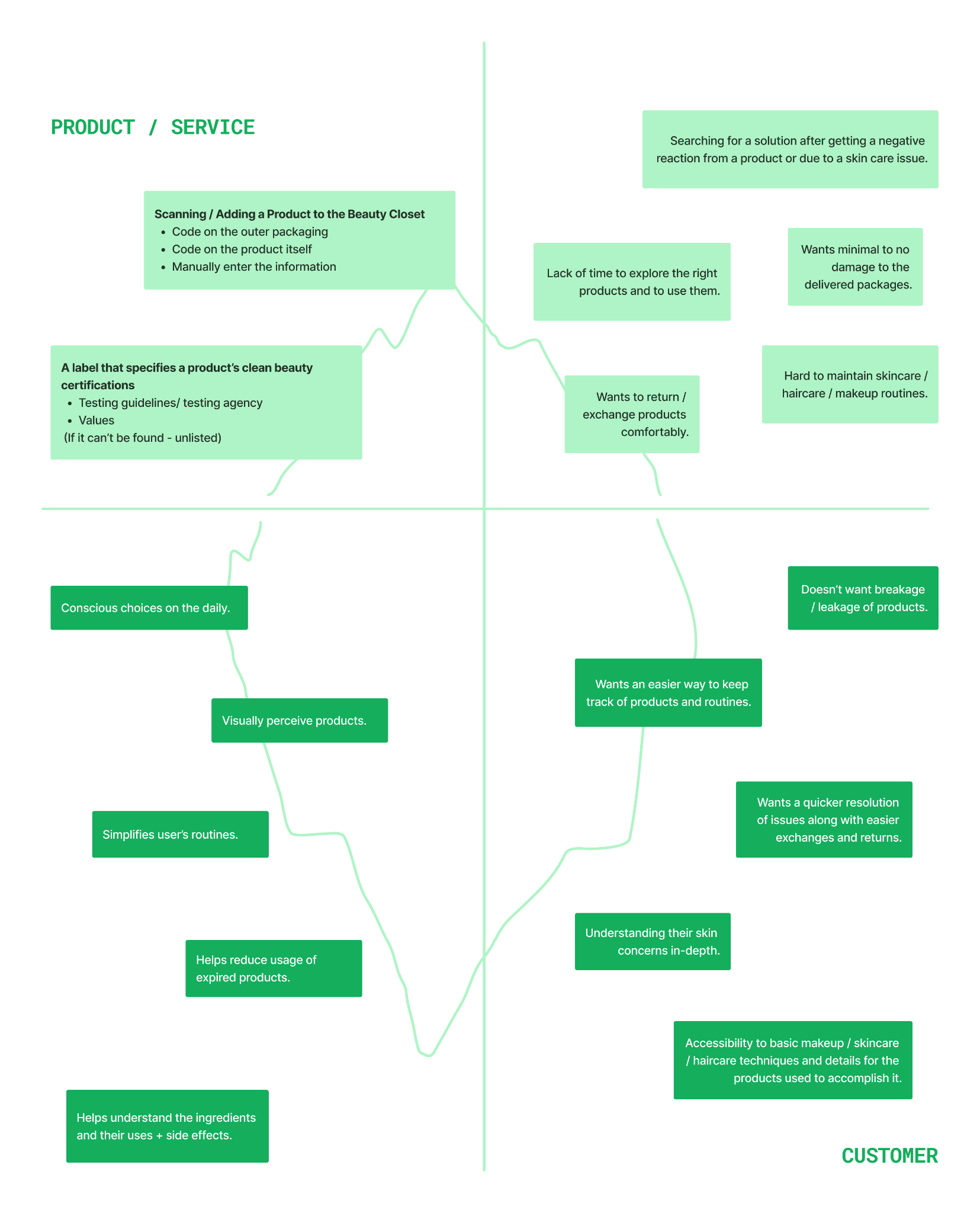
Abstraction Laddering
This technique helped us prioritize the important aspects of building and maintaining a beauty routine. This includes some of the processes that governs the emotional journey of the user that might not be common and well-known.
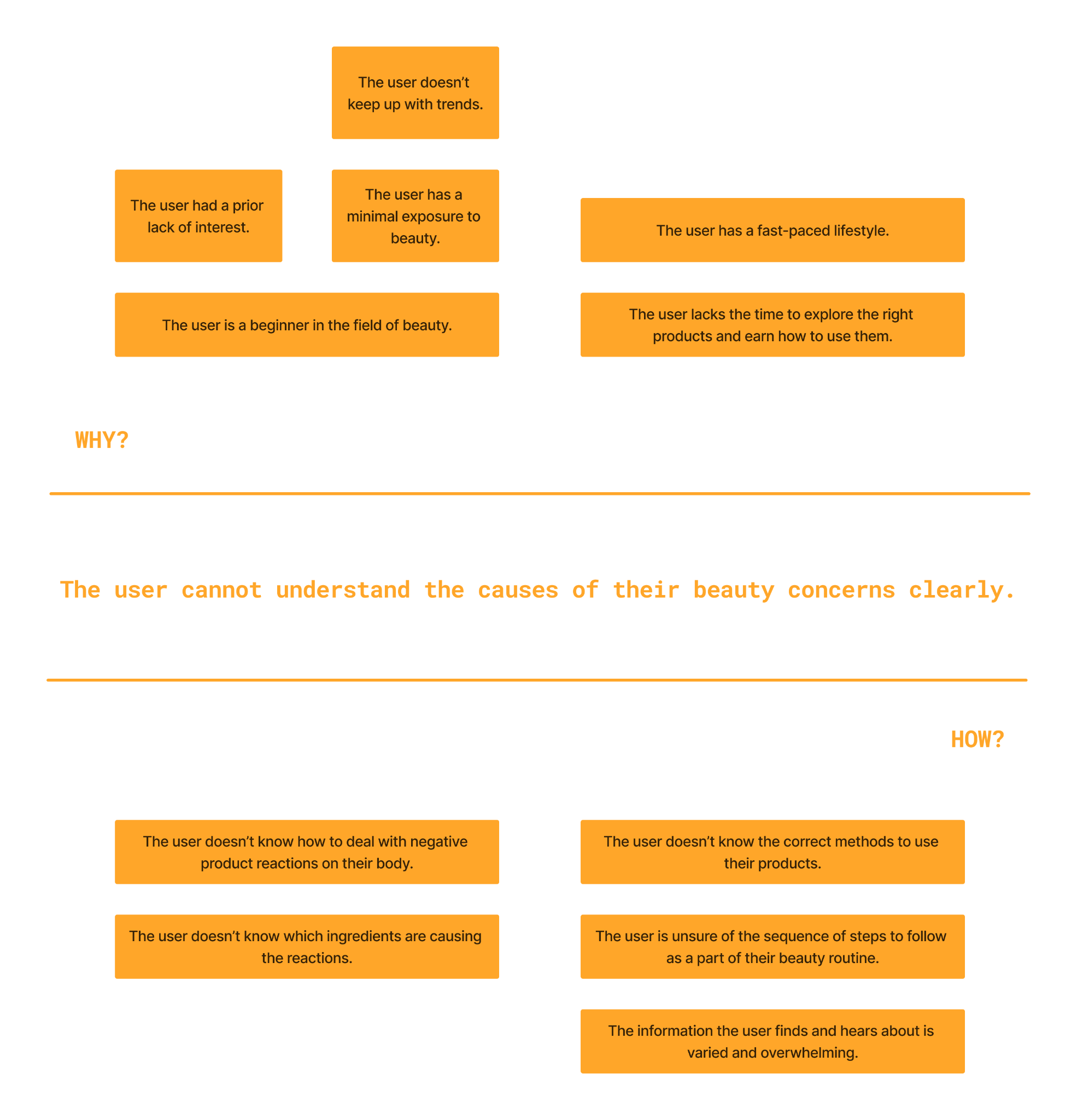
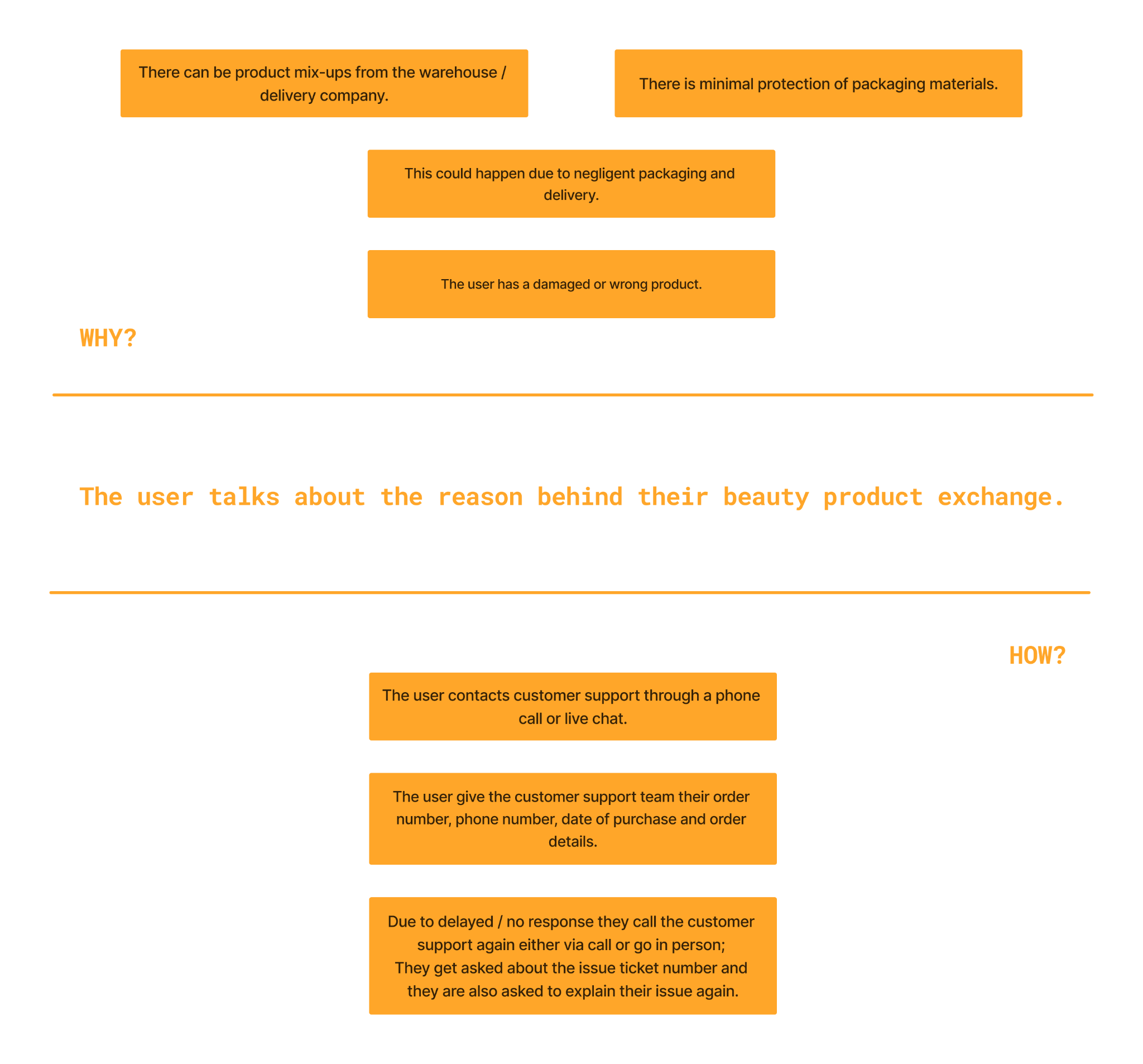
Integrated Data Thinking
We wanted to recapture and explore ideas that are still missing in the big picture. This method helped us to identify missing themes and questions that we need to consider.
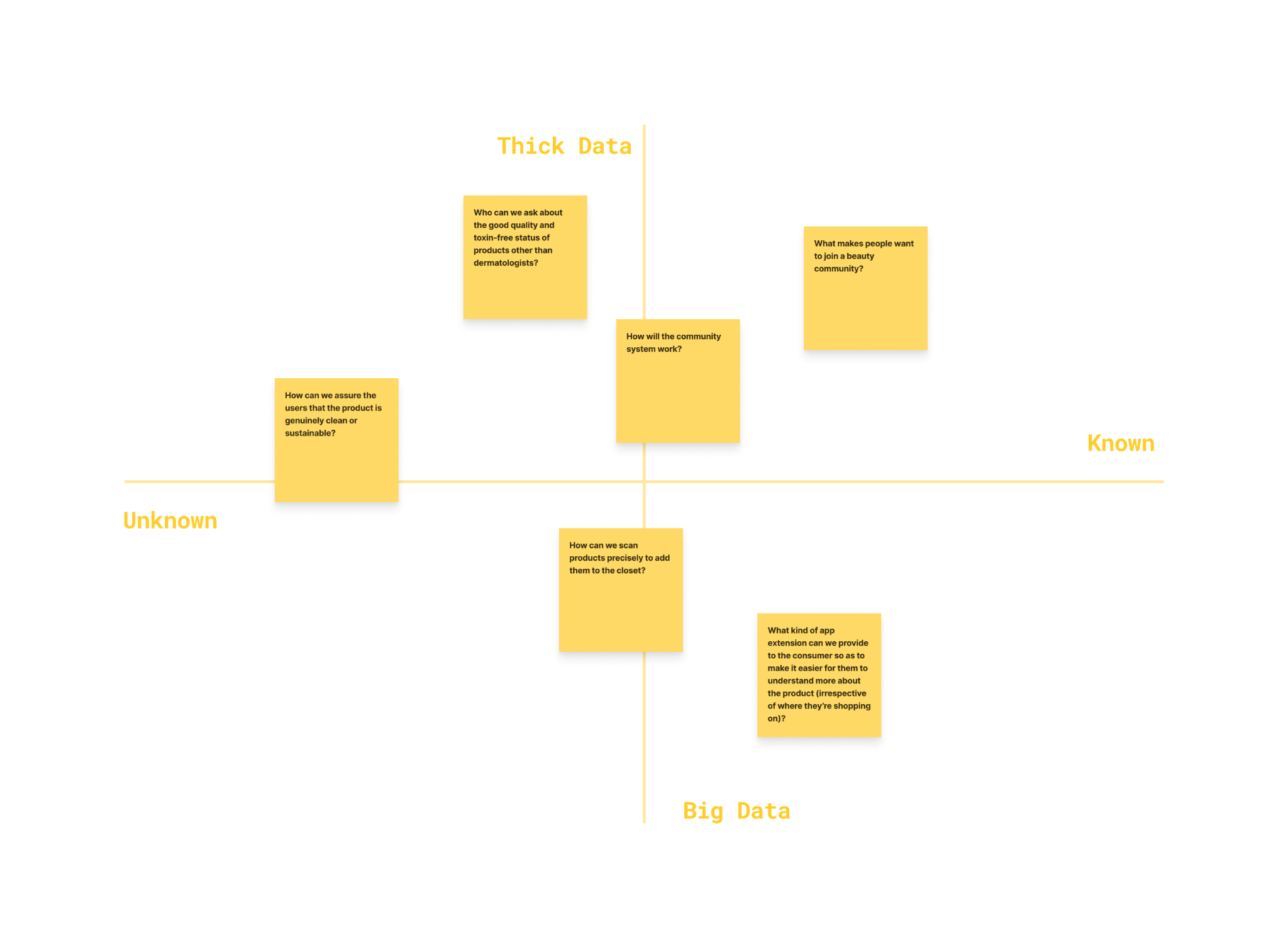
Interviews
Participants: 4
We were still trying to grasp users' perspectives on beauty and shopping preferences. We jotted down some questions and set out to ask a few participants their thoughts and opinions on the topic.
Questions:
- Do you remember the last time you made a purchase that you enjoyed?
- Do you prefer in-person shopping, online shopping, or both?
- Do you like to read reviews or consult blogs before buying a product?
- Do you keep up with seasonal sales on shopping platforms?
- Do you purchase eco-friendly products often?
- Do usually return damaged or mismatched products? If so, how?
- Do you have a beauty routine?
- Do you / your close circles regularly use beauty products?
- Have you consumed beauty-related content on social media? If so, do you have any favorite creators you follow?
- What is your opinion on attending workshops to learn more about beauty?
- “Trends often dictate my purchasing decisions.” Do you agree with this statement?
- Do the terms “Sustainable Beauty”, “Clean Beauty” and “DIY Beauty” seem familiar to you? If so, can you explain how they are different from each other?
- Are you interested in learning about the ingredients in your skincare products?
- Are men investing their money and time on beauty regimens or is it still a niche group?
- Are future generations making sustainable and eco-friendly lifestyle choices?
Readings
We did some desktop research that helped us understand our assumptions and get conclusive evidence for our feature hypothesis.
Thematic Analysis
We categorized information from all of the research done so far to find and label themes. This aided us in finding concrete evidence for our features.
Insights
From all of the qualitative + quantitative data research we've done so far (This also includes desktop research), these are the insights that we derived from thematic analysis.
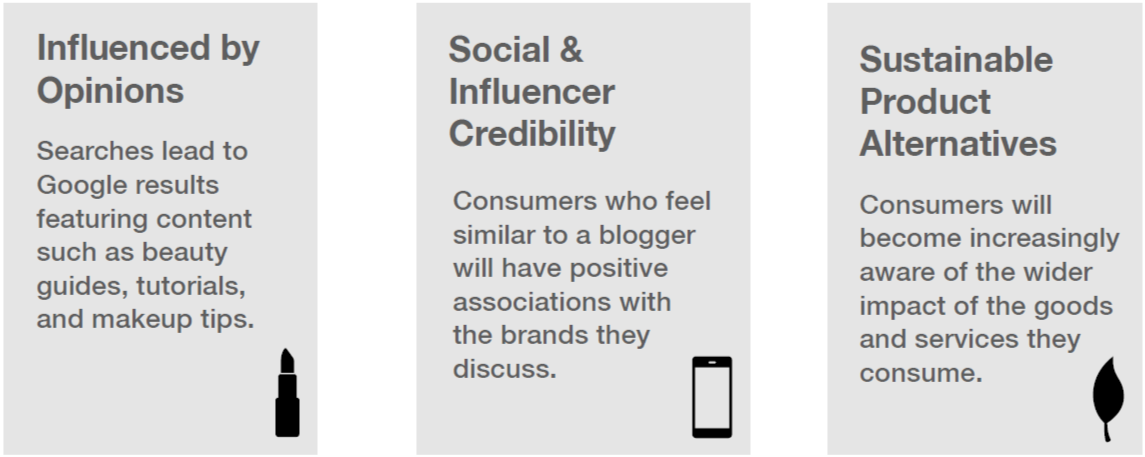
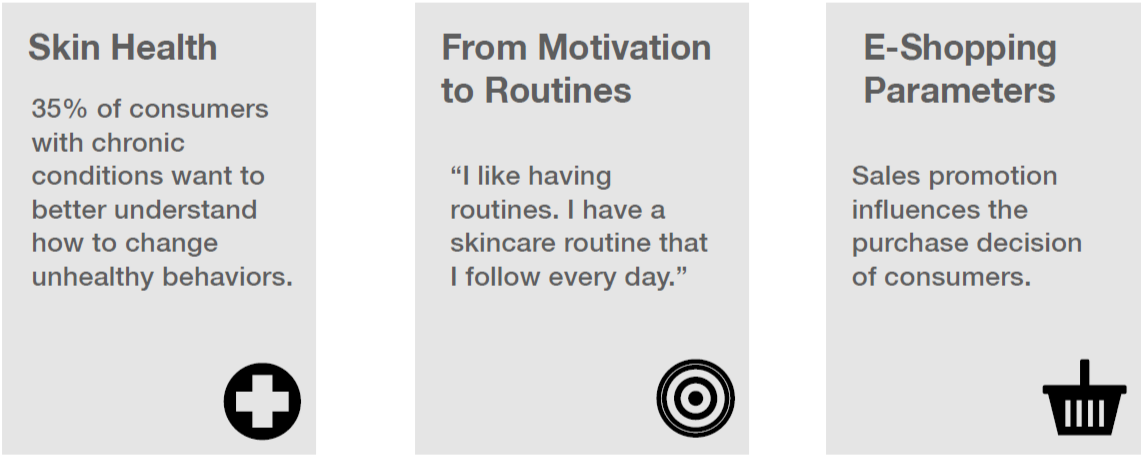
User Intent Personas
Using the insights from research, we were able to aggregate them into two main user intent personas from their level of internal receptiveness and external + perceived environment.
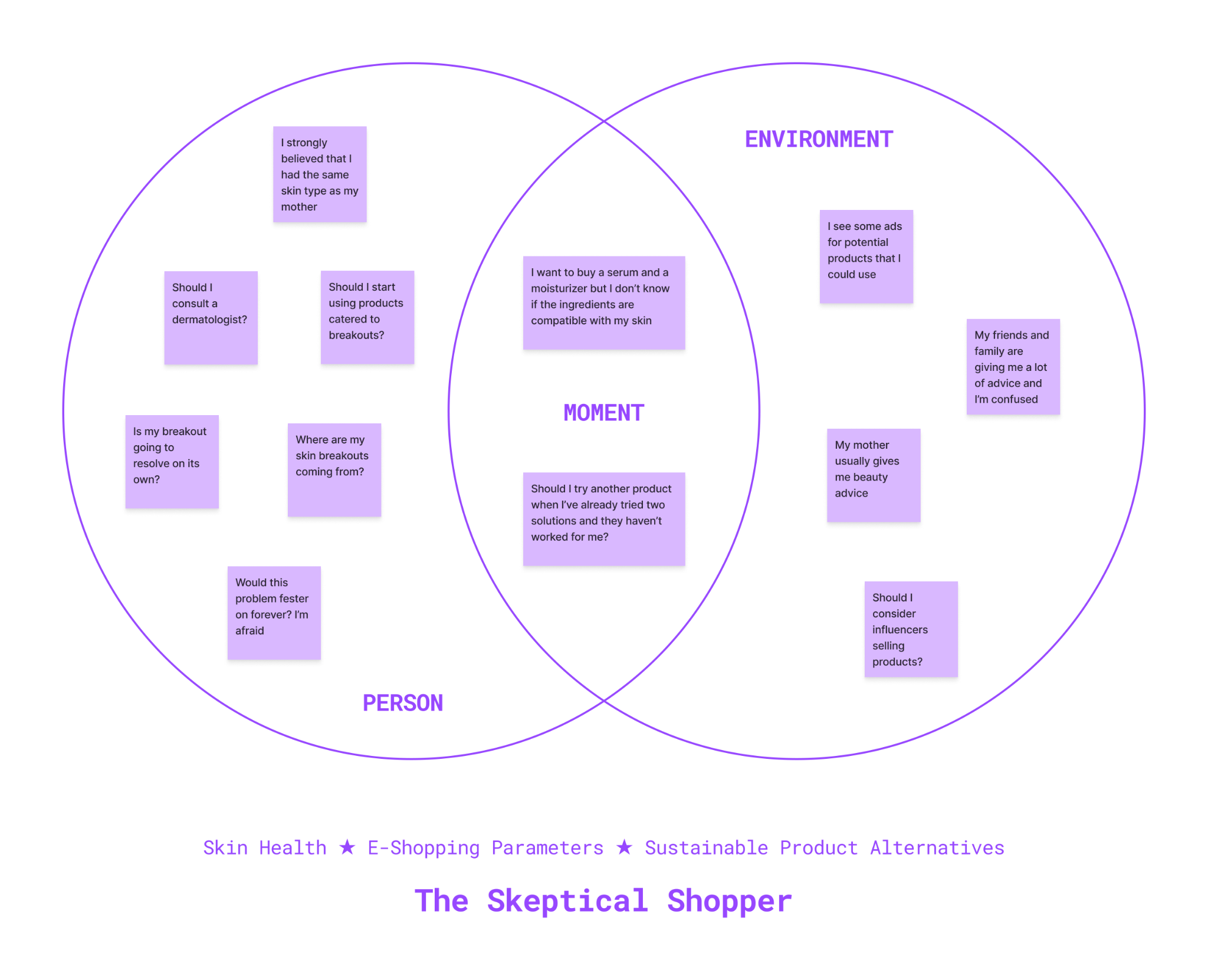

User Stories + Use Cases
With this activity, we had a picture of how these personas think and react in the real world.
Task Flow: The Skeptical Shopper
From the use case, we were able to understand how this persona might use our application as a guest user. This means that they want to test the waters before actually committing to an account.

Low Fidelity Wireflow: The Skeptical Shopper
We completed a low fidelity model for the search aspect of the application; The persona would want to make sure the product they want to buy is safe for their skin and is earth conscious.
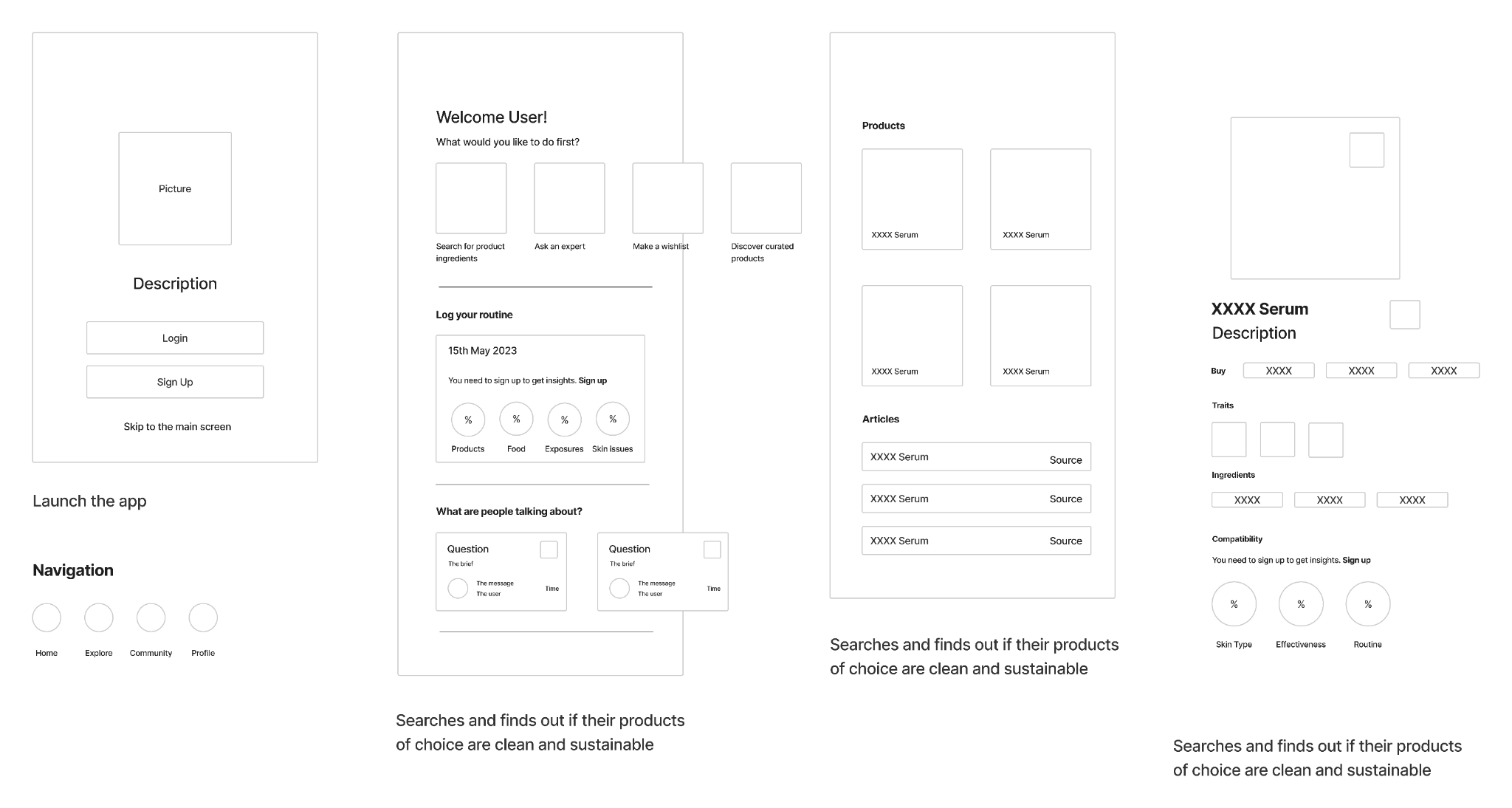
High Fidelity Wireflow: Current Summary
Figma Link: https://www.figma.com/file/AOs...
These are some of the screens that have been designed so far.
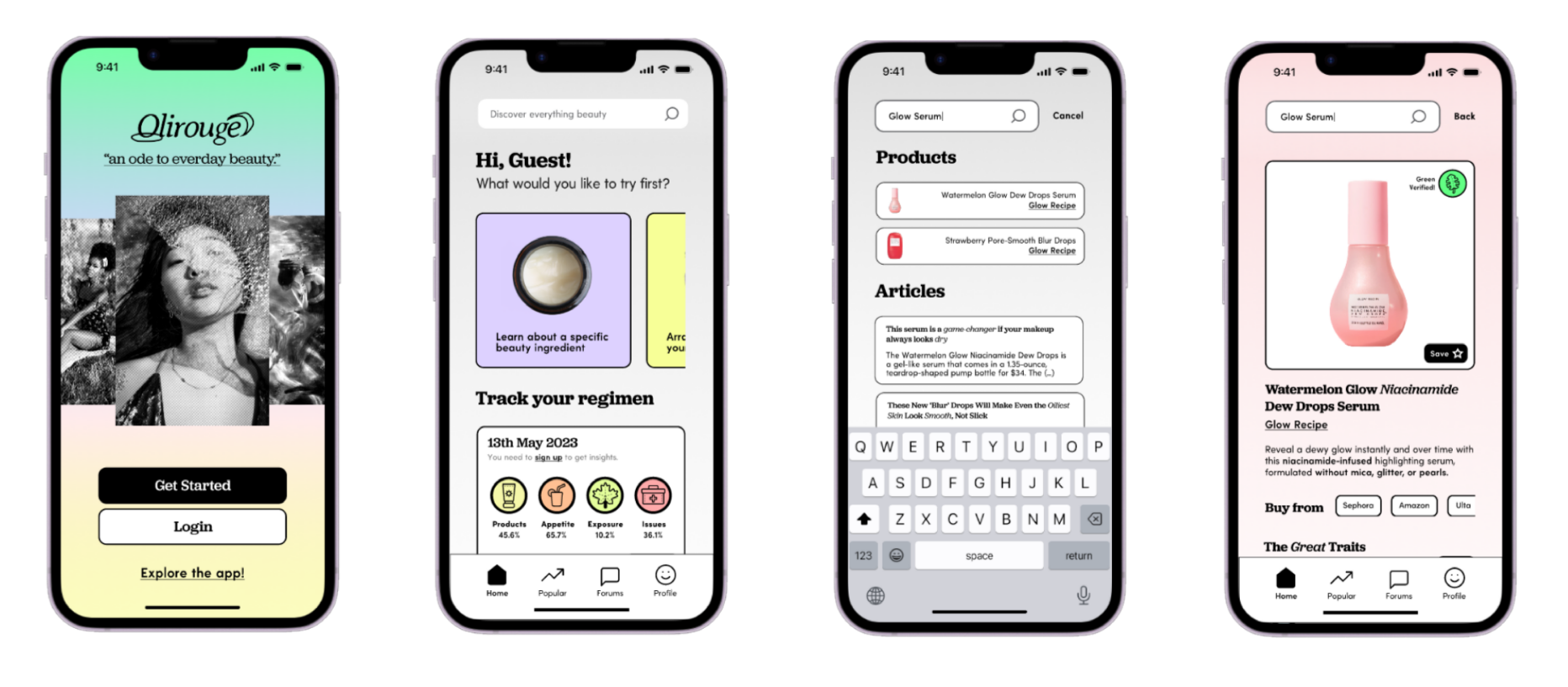
Post a comment